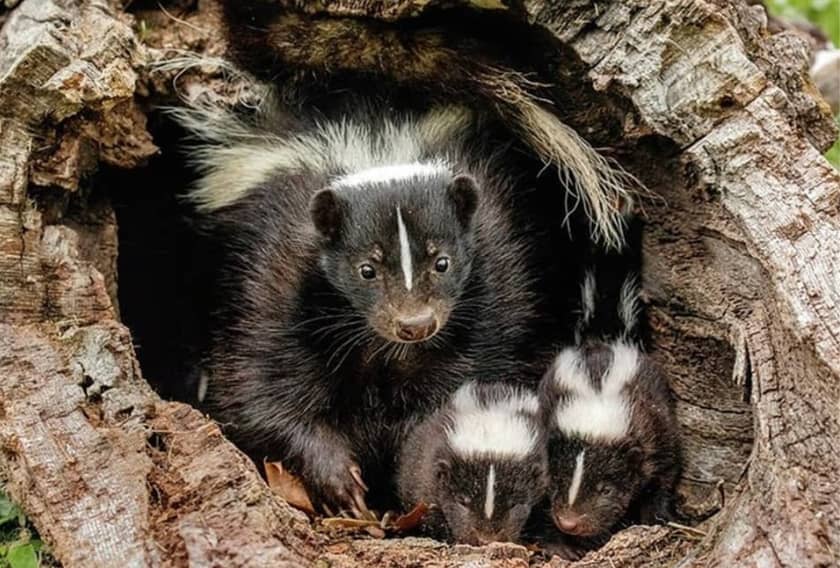Fennec Fox enclosure should be set by understanding the needs of this creature. It is known for its large ears and adorable appearance and is native to the deserts of North Africa and the Sahara. As exotic pets, they have specific needs that mimic their natural environment to thrive. In this blog, we’ll cover everything you need to know about creating the perfect habitat for a fox, whether in the wild or as a pet
Habits and Lifestyle
Fennec foxes make their homes by digging dens under stable dunes. They sleep in these caves during the hot day and come out at night when it’s cooler. They like to live near dunes that have some plants around them. Unlike most foxes, which are usually alone, fennec foxes live in small groups of around 10 members. Males are very protective of their area and mark their territory with urine, especially during mating season when they can become aggressive.
Group name: Leash, skulk, earth, lead, troop
Lifestyle: They live on land, are territorial, give birth to live young, and make burrows.
Seasonal behavior: they don’t migrate.
Fennec Fox Enclosure
Fennec foxes are energetic and need plenty of room to run, jump, and play.
Indoor Enclosure:
It should be at least 8 feet by 4 feet and height enough for climbing toys. This space lets them stay active even inside.
Outdoor Enclosure:
Ideally, the outdoor area should be much larger, offering them freedom to explore. Aim for a space that’s at least 10 feet by 6 feet. The bigger, the better!
Their space should give them room to explore, dig, and play with toys. They are active animals, so cramped spaces will make them bored and stressed.
What Should Be the Criteria for Setting Up an Indoor Fennec Fox Enclosure?
Escape-Proof Design
Fennec foxes are expert escape artists! They are great at climbing and digging, so its enclosure must be secure.
High walls or fencing: Should be at least 6 feet tall to stop them from climbing out.
Digging barriers: Since they love to dig, use a solid base like cement or bury wire mesh at least 2 feet under the ground in the enclosure to prevent them from digging out.
This design ensures your fox is safe and won’t escape while you’re not looking.
Safe Flooring
The flooring of the enclosure should be soft and natural to keep their feet healthy and allow them to dig. Sand or dirt is ideal because it mimics their natural desert habitat. You can also use soft bedding like hay or natural fibers inside their shelter. Avoid rough surfaces like concrete, as this can harm their paws, and make sure they can dig safely without hurting themselves.
Climbing and Ventilation
Fennec foxes love to climb, explore, and jump around, so their enclosure should include opportunities for this: Install ramps, branches, or cat trees so they can jump to different levels.
Include ledges or raised platforms where they can climb and observe from higher spots.
Proper ventilation is important, especially if the enclosure is indoors, to keep the air fresh and maintain the right temperature. Outdoor enclosures should also have good airflow.

Shelter and Shade
Fennec foxes need a palace to retreat and rest during the day: Provide a den or hideout in the enclosure where they can sleep and feel safe. You can use a small wooden or plastic house, much like a dog house. If the enclosure is outdoors, make sure there is plenty of shade to protect them from direct sunlight. Fennecs are desert animals, but they still need to avoid too much heat. Having a cool, quiet place helps them feel secure and comfortable.
Temperature Regulation
Fennec foxes are used to desert climates, they need warmth but also ways to stay cool:
Heat pads or space heaters are necessary to maintain a warm temperature, especially during colder months. The ideal temperature range for their enclosure is between 75°F and 80°F.
Provide cool spots or shaded areas in case the temperature gets too high. They must have a place to cool down if it becomes too hot, especially in the summer.
A balanced temperature will ensure they stay healthy and comfortable.
Cleaning and Maintenance
Keeping the enclosure clean is essential to avoid health problems:
Spot clean: the enclosure every day by removing waste, and leftover food, and cleaning up any spills.
Weekly deep cleaning: Disinfect the enclosure, especially their shelter and food/water bowls. You can use pet-safe disinfectants.
Rotate toys and items: Change their toys and rearrange the items inside the enclosure regularly to keep their environment fresh and engaging. A clean enclosure is important for their health, and switching up toys keeps them mentally stimulated.
Litter training: You can try using a litter box in one corner to help them stay clean.

Safety and Preventing Escapes
Fencing: Fennec foxes are escape artists, so make sure their enclosure is very secure with strong wire mesh. Also, bury the fence about 12 inches underground because they love to dig.
Roof: Always cover the top of the enclosure to stop them from jumping out and to protect them from other animals.
Water and Food Blows
Food Bowl: Use a shallow and sturdy bowl for their food. Fennec foxes eat a mix of fruits, vegetables, and insects, so a proper bowl is needed.
Water Bowl: Always have fresh water available. Make sure to use a heavy bowl so they don’t knock it over when playing.
What Should Be the Criteria for Setting Up an Outdoor Fennec Fox Enclosure?
Shade and Shelter:
Fennec Foxes come from hot deserts, so they need shade in their enclosure to stay cool.
Natural Shade: You can use trees or plants to create shade.
Artificial Shade: Install awnings, tarps, or a roofed section in the enclosure to offer shade and protect them from the sun during the day.
Cool Zones: Make sure there are cooler spots within the enclosure where your fox can escape the heat
Dens
Fennec foxes live in the wild, so providing them with a den is important for their comfort and sense of security.
Burrow-like shelter: You can mimic their natural burrows by providing a covered, cave-like den or a small pet house. The entrance should be small enough to feel secure but spacious inside for them to move around.
Soft Bedding: Use soft blankets, towels, or shredded paper for bedding. Make sure it is clean and changed regularly to keep it hygienic.
Hollow Areas
Fennec foxes enjoy exploring and having hideouts. Incorporating hollow spaces in their enclosure adds to their natural behavior.
Logs or tubes: Add hollow logs PVC pipes, or large tubes where they can crawl through and hide. These provide both mental stimulation and a place to retreat.
Burrows Simulation: You can also create underground tunnels or small burrow-like areas that give them the feel of being in the wild.
Plants
Adding plants to the enclosure is a great way to create a more natural environment for your fennec fox.
Desert Plants: Choose dessert-friendly plants like small succulents, grasses, and shrubs that won’t harm the fox if chewed.
Shade and hideout: Plants can serve as natural shade and hiding spots, making the enclosure feel more like their natural habitat.
Safe Plants: Make sure the plants are non-toxic and safe for animals, as fennec foxes might nibble on them.
Resting Area
Fennec foxes need a comfortable resting area where they can relax and feel safe. Since they are nocturnal animals, they spend a lot of time sleeping during the day.
Flat Rocks
Fennec foxes love to rest on warm surfaces. Adding flat rocks to their enclosure provides a comfortable place for them to bask in the sun.
Warm spot: The rocks absorb heat, which makes them a cozy resting place for relaxing.
Natural Look: Flat rocks also give the enclosure a more desert-like appearance.
Elevated Platform
Fennec foxes enjoy climbing and having different levels in their environment.
Safe Climbing: An elevated platform gives your fox a chance to climb up and look around.
Resting Spot: It can also serve as a cool place to rest off the ground.
Variety: The platform adds variety to their enclosure, keeping them active and entertained.
Using Different Materials and Textures in a Fennec Fox Enclosure
Fennec foxes enjoy a variety of surfaces to explore, which helps keep them mentally and physically stimulated.
Sand
Natural Feel: Sand mimics their natural desert environment.
Comfortable for digging: Fennec foxes love to dig, and sand is soft on their paws.

Grass or plants
Natural Environment: Adding some plants or patches of artificial grass can give the enclosure a more natural look.
Variety in texture: It also gives them a soft surface to walk on, different from the sand and rocks.
Fennec Foxes Have Special Features That Help Them Live in the Desert:
Light-colored fur: It reflects sunlight to keep them cool and helps them blend in with the sand.
Thick fur on their feet: Protects their feet from the hot sand and helps them walk without slipping.
Nocturnal habits: They stay active at night to avoid the heat during the day.
Kidneys: Their kidneys help them save water by reducing water loss.
Large ears: Their big ears help control body temperature by letting heat escape.

Some Interesting Facts about Fennec Fox Enclosure
Social life: They have varied social behaviors and live in groups.
Smallest Fox: Fennec foxes are the smallest foxes in the world, standing about 8 inches tall and weighing only 2 to 3 pounds.
Water Adaptation: Fennec foxes can survive with very little water, getting most of their moisture from their food.
Big Ears: Their large ears help them hear and cool down their body.
Furry Feet: They have extra fur on their feet to help them walk on hot sand.

Frequently Asked Questions
Question: Do fennec foxes live in burrows?
Answer: Yes, Fennce foxes live in burrows in the wild. They dig these burrows to stay cool in the desert heat and to protect themselves from predators.
Question: How big should a fox den be?
Answer: A fennec fox’s den should be spacious enough for them to be around comfortably. Ideally, It should be at least 2 to 2 square meters in size, with areas to dig and hide, as they enjoy burrowing and need space to play.
Question: Can a ferret cage be used to keep fennec foxes?
Answer: No, a ferret cage is too small for a fennec fox. Fennec foxes are very active animals and need much more space to jump, run, and play than what a typical ferret cage offers.
Question: Fennec fox be kept outside or inside?
Answer: A fennec fox can be kept inside or outside, but it’s generally recommended to keep them indoors, especially in areas where the climates are very different from their natural desert environment. If kept outside, their enclosure must be safe and secure with protection from extreme weather.
Question: Are fennec foxes indoor pets?
Answer: Fennec foxes can be kept as indoor pets. However, they need plenty of space and stimulation, as they are very energetic and curious animals.
Question: Can a fennec fox live in apartments?
Answer: Fennec foxes can live in apartments, but they must have enough space to run and play. They are very active and require a lot of attention, so you need to make sure your apartment is fox-friendly with room for them to exercise and explore.
Conclusion
Fennec foxes need a safe and comfortable place to live, with enough space to dig, run, and play. Whether kept indoors or outdoors, their home should let them move around freely and feel secure. With the right care and space, fennec foxes can live happily and stay healthy.


